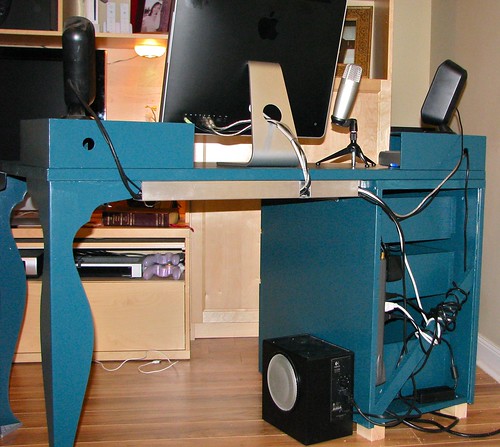 That was a pretty good start, but we really don't like having untidy cables running to and fro. We left the back off of our Vika Furusund drawer unit and side-mounted a power strip behind the drawers. Excess cable slack was wrapped around the support bracket we built into the unit. A power brick sits nicely behind the bottom drawer.
That was a pretty good start, but we really don't like having untidy cables running to and fro. We left the back off of our Vika Furusund drawer unit and side-mounted a power strip behind the drawers. Excess cable slack was wrapped around the support bracket we built into the unit. A power brick sits nicely behind the bottom drawer.To accommodate the wires running from the top of the desk, Joel found an old crash bar from a commercial door in our garage. After he took out the push part, a nice 29" aluminum U channel remained. It even had a few places for screws that worked out great for securing it to the underside of the desk. (Just make sure any screws you use aren't too long so they don't poke through the table top!)
The channel had plenty of room to run all of the cables from the back of the computer, plus he was able to hide the slack inside as well. He cut a few notches to accommodate the cables coming from different angles. It worked perfectly:
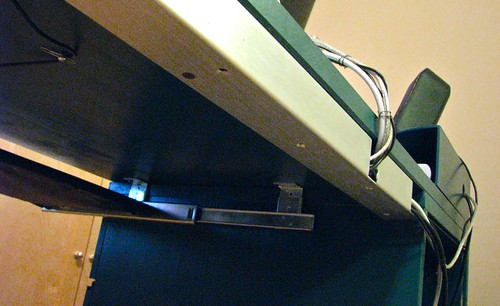
You can use a number of different things as a U channel: U-shaped brackets, plastic tubing, etc. Just take a look around your hardware store and see what you can find.
Next, we decided to paint our desk. If you're going to paint, make sure you allow plenty of time for each coat to dry. This is very important if you want your desk to look and feel good. For example, this project took about a week to complete with adequate dry time.
If your desk is already the color/finish you want, skip to Part 3, otherwise, read on!
Start by painting with a good primer. For this project we used Kilz 2. Painting with a primer ensures that all of your pieces will look the same color when you're done. Don't worry if the primer is a little uneven. Just make sure there are no drips at the edges or runs. Let dry overnight.
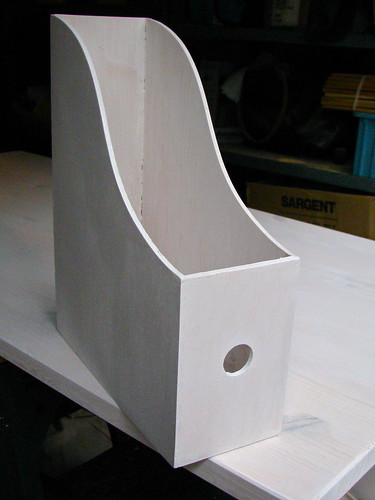
Next, sand the primer with a fine grit sandpaper. Use a damp cloth to remove any dust, and apply a thin first coat of paint. Let dry overnight.
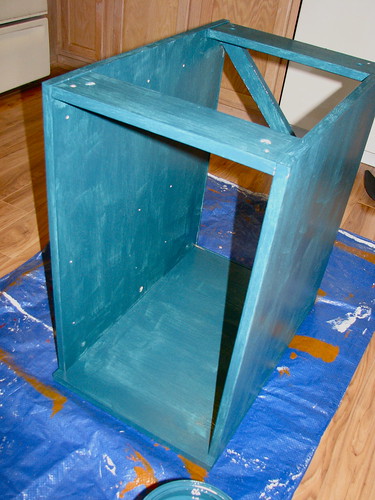
You'll probably want at least one more coat, and possibly a third depending on how things are looking. Make sure to lightly sand in between coats and use a damp cloth to remove dust. (Ikea furniture tends to need several sandings.)
There's no race here, so remember to apply thin coats of paint since it's easier to control drips and runs. To let the pieces dry, set up a drying station in a dust free, cat free, and friends-who-can't-resist-touching-and-asking-is-it-dry-yet free zone.
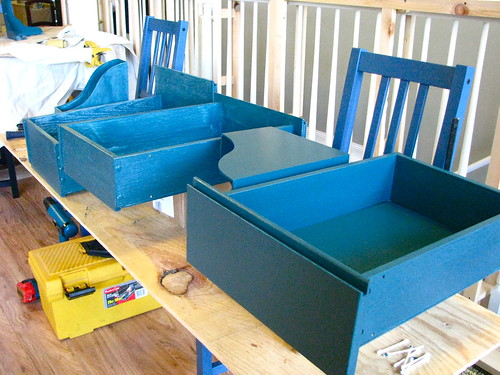
Once you are satisfied with the paint job, allow at least 48 hours for the final coat to fully dry and harden before assembling the desk or setting anything on it. Don't let any of the painted pieces touch each other (drawers, doors, etc) since they might be slightly tacky and the paint will bond them together. Our desk took about 3 days before it was no longer tacky!
If you really want to go that extra step, You can apply a clear coat to protect against water marks and spills. I like Minwax Polycrylic Protective Finish. It's water based and fast drying.
So now that our wires are taken care of, and the pieces are all painted and dried, it's time to put the desk together. Check back for Part 3 on how to make your desk ergonomic.
No comments:
Post a Comment